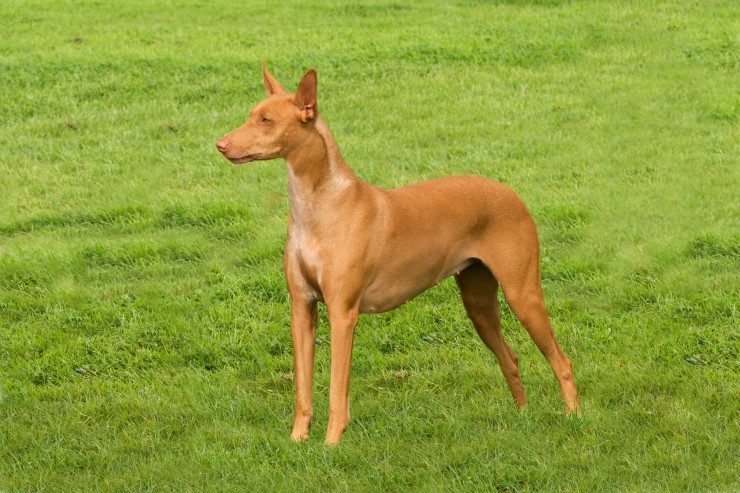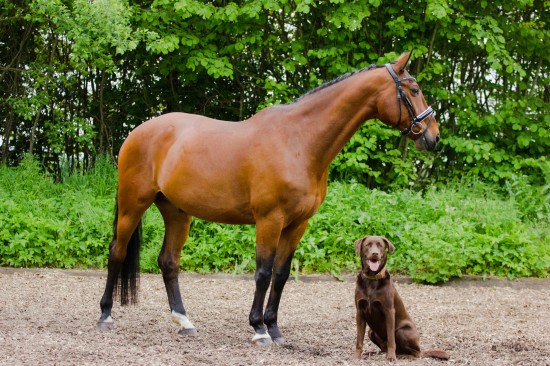
At times the differences between training and control is too easily lost. Training involves the use of commands and hand gestures, with leashes or treats, to gain desired behavior. On the other hand, using choke or 'no-bark' collars, electronic fences and similar devices is for control.
Control isn't always a negative thing. Dogs typically have and seek a social hierarchy in which one is the alpha (leader) and in any human-dog pair the human has to take that role. If this doesn't happen the result is destruction of property, conditions that are unsafe for dogs and humans, a maladjusted dog and much frustration on the part of the dog owner.
Choke collars were invented to aid in obtaining control. Dogs, like humans, are each individual and possess their own separate personalities. Some are naturally more assertive or slower to learn. For the dogs that aren't responsive to a regular leather or nylon collar, a metal choke collar can offer increased discouragement from pulling and leaping.
The possible problem is that if used improperly - which is all too easy to do - they can be counter productive and sometimes even unsafe. Choke collars fit only one way and when fitted should allow from one to three fingers gap between the neck and the collar. Three for a larger dog, one for smaller. Normally, a collar two inches longer than the neck circumference will do.
If used improperly, however, choke collars may pinch the skin - creating hot spots that will be made worse if the dog scratches them. Choke collars can also unintentionally squeeze the trachea. An instantaneous pull-and-release is not injurious, although because of the way it is designed creates discomfort, however for dogs that are inclined to pull against the leash this movement is not easy to do. Choke collars are generally not recommended, particularly for small dogs.
Prong collars are not as dangerous as they seem, but - in this trainer's view - have virtually no redeeming characteristics. The one beneficial feature of the design is their restricted diameter - they can only close down so far. Then again, a dog with such a strong tendency to pull that prong collars look attractive to use, needs more than a quick fix consisting of choking and poking. That animal requires dedicated attention and behavior modification training.
Halter collars, which wrap around both the neck and the muzzle, but doesn't prevent panting or impair drinking can give the owner additional control. The downside is, since they don't restrict biting or grasping, much of their potential value is gone. An ordinary leash and collar, or even a chest halter may be preferable.
'No-bark' collars will occasionally help with those dogs that continue to bark long after the initial impetus is gone. Barking is a natural response to possible threats and is also used to attract attention when the dog becomes separated from the pack. However, for reasons not completely understood, some individual dogs continue to bark for extended periods of time or at the slightest irritation.
Electronic collars that dissuade barking come in two types: noise and shock. Noise collars give off a short, unpleasant sound that distracts and is intended to discourage continued barking.
Shock collars produce a short but painful electric shock that can be repeated and lengthy during prolonged and/or persistent barking. Objective tests of their effectiveness demonstrate varied results, however. As with prong collars, any dog requiring one would probably benefit more from careful, professional help.
At times quick fixes are tempting and have their place - until they become substitutes for more beneficial (both to trainer and dog) long-term training. Investing the time to learn to get the attention of your dog and compliance without excessive reliance on control devices is always better. The end result is a saner owner and happier dog.
 Health Concerns Associated With The Siamese Cat
Health Concerns A
Health Concerns Associated With The Siamese Cat
Health Concerns A
 How To Get The Best Pet Insurance Deal
How To Get The Be
How To Get The Best Pet Insurance Deal
How To Get The Be
 A Feeding Guide For Pharaoh Hounds
A Feeding Guide F
A Feeding Guide For Pharaoh Hounds
A Feeding Guide F
 The Temperament Differences Between Dogs And Bitches
The Temperament D
The Temperament Differences Between Dogs And Bitches
The Temperament D
 How To Keep Dogs Safe Around Horses When Out On A Walk
How To Keep Dogs
How To Keep Dogs Safe Around Horses When Out On A Walk
How To Keep Dogs
Copyright © 2005-2016 Pet Information All Rights Reserved
Contact us: www162date@outlook.com